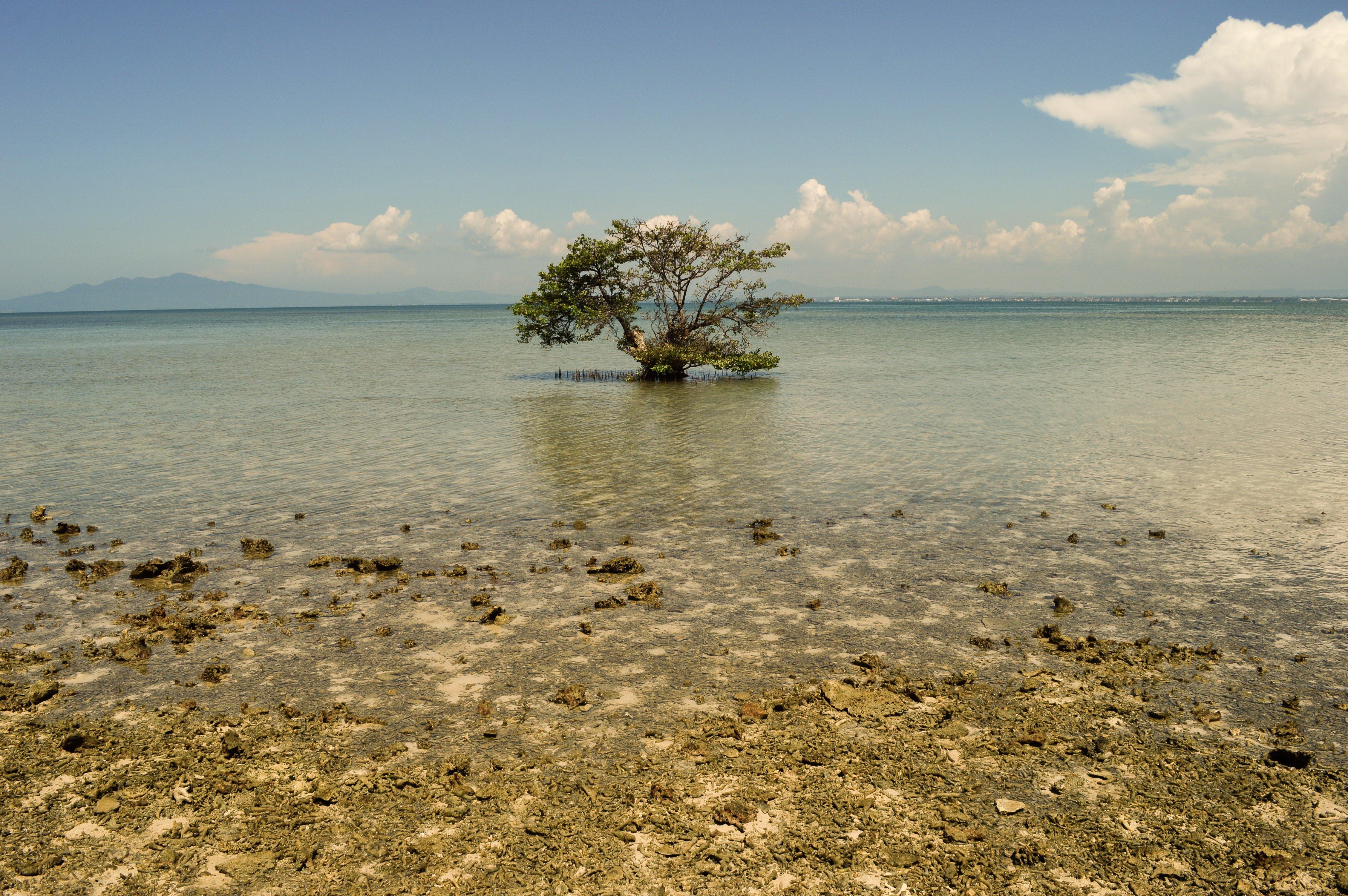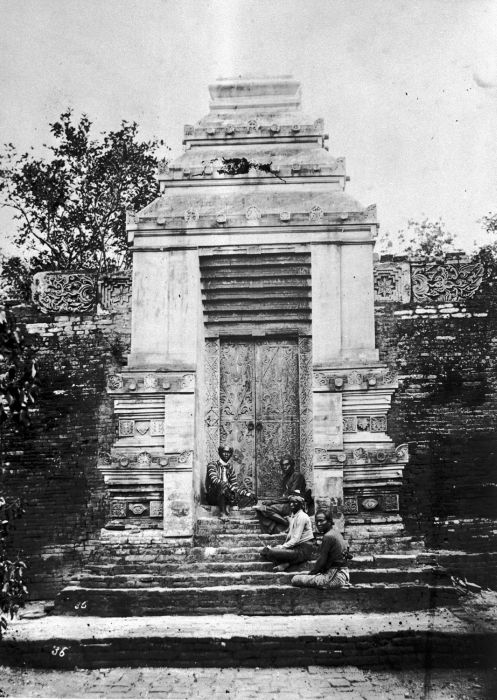|
Sultan Hadlirin
Sultan Hadlirin or also known as Toyib of Kalinyamat, is the duke ( jv, adipati, script=Latn) of Kalinyamat, a vassal of Demak Sultanate. He was dubbed as Sultan Hadlirin because he came to Jepara to propagate Islam in Java. Sultan Hadlirin's wife is the princess of Demak, the daughter of Demak Sultan Trenggana, ''Ratna Kencana'', which popularly known as Ratu Kalinyamat. Sultan of Hadlirin ruled te area now corresponds to the Jepara Regency, Kudus Regency, Pati Regency, Rembang Regency and Mataram. He was of non-Javanese origin. Some version mentioned him as a Chinese Muslim merchant named Win Tang stranded on Jepara shore after his ship was wrecked by storm, and then he became the disciple of Sunan Kudus and became the son in law of Demak Sultan Trenggana. Another version mentioned that Win Tang origin was from Aceh. His real name was Prince Toyib, one of the son of Aceh Sultan, Sultan Mughayat Syah (1514-1528). Toyib went on an adventure to China and adopted as a son of a Chine ... [...More Info...] [...Related Items...] OR: [Wikipedia] [Google] [Baidu] |
Kalinyamat Sultanate
Kalinyamat Sultanate or Kalinyamat Kingdom, was a 16th-century Javanese Islamic polity in the northern part of the island of Java, centred in modern-day Jepara, Central Java, Indonesia. Both Jepara and Kalinyamat was first established as a Duchy settlements under Demak Sultanate. After succession feud, Kalinyamat was declared as a separate polity from Demak. Traditional accounts provide the names of several of its leaders; Sultan Hadlirin, and his wife and also successor, Ratna Kencana (Ratu Kalinyamat) (r. 1549–1579). History Formation The settlements in Kalinyamat and the port of Jepara was established as a ''kadipaten'' or duchy under Demak Sultanate. The daughter of Sultan Trenggana of Demak, Ratna Kencana and her husband, Sultan Hadlirin, was appointed as the duke and duchess of Kalinyamat by Demak Sultan. After the death of Trenggana, the throne was succeeded to his son Sunan Prawata. In 1549, Arya Penangsang, the duke of Jipang Panolan ascend to the throne o ... [...More Info...] [...Related Items...] OR: [Wikipedia] [Google] [Baidu] |
Demak Sultanate
The Demak Sultanate (کسلطانن دمق) was a Javanese Muslim state located on Java's north coast in Indonesia, at the site of the present-day city of Demak. A port fief to the Hindu-Buddhist Majapahit kingdom thought to have been founded in the last quarter of the 15th century, it was influenced by Islam brought by Muslim traders from China, Gujarat, Arabia and also Islamic kingdoms in the region, such as Samudra Pasai, Malacca and Bani (Muslim) Champa. The sultanate was the first Muslim state in Java, and once dominated most of the northern coast of Java and southern Sumatra. Although it lasted only a little more than a century, the sultanate played an important role in the establishment of Islam in Indonesia, especially on Java and neighboring areas. Etymology The origin of Demak was the settlement named Glagah Wangi. According to tradition, the first person that Raden Patah encountered in Glagah Wangi was a woman named Nyai Lembah, from Rawa Pening. Nyai Lembah invited ... [...More Info...] [...Related Items...] OR: [Wikipedia] [Google] [Baidu] |
Islam
Islam (; ar, ۘالِإسلَام, , ) is an Abrahamic religions, Abrahamic Monotheism#Islam, monotheistic religion centred primarily around the Quran, a religious text considered by Muslims to be the direct word of God in Islam, God (or ''Allah'') as it was revealed to Muhammad, the Muhammad in Islam, main and final Islamic prophet.Peters, F. E. 2009. "Allāh." In , edited by J. L. Esposito. Oxford: Oxford University Press. . (See alsoquick reference) "[T]he Muslims' understanding of Allāh is based...on the Qurʿān's public witness. Allāh is Unique, the Creator, Sovereign, and Judge of mankind. It is Allāh who directs the universe through his direct action on nature and who has guided human history through his prophets, Abraham, with whom he made his covenant, Moses/Moosa, Jesus/Eesa, and Muḥammad, through all of whom he founded his chosen communities, the 'Peoples of the Book.'" It is the Major religious groups, world's second-largest religion behind Christianity, w ... [...More Info...] [...Related Items...] OR: [Wikipedia] [Google] [Baidu] |
Ratu Kalinyamat
Ratu Kalinyamat or Ratna Kencana (died ''after'' 1579) was the queen regnant of Kalinyamat and Jepara, a Javanese Islamic polity on northern coast of Central Java in ca. 1549–1579. She is mainly known for her attack and naval expeditions on Portuguese Malacca. She was the daughter of Sultan Trenggana of Demak and the spouse of Sultan Hadlirin. Ratna Kencana ascended the throne after the assassination of her brother, Sunan Prawoto, and her husband by Arya Penangsang Arya Penangsang was king of the Sultanate of Demak The Demak Sultanate (کسلطانن دمق) was a Javanese Muslim state located on Java's north coast in Indonesia, at the site of the present-day city of Demak. A port fief to the Hind .... Reign Queen Kalinyamat ascended the throne after the death of her husband, the Duke of Jepara. The couple was childless, so there was no one else to become the successor. After the completion of the hermitage, she became ''Kanjeng Ratu Kalinyamat'' the queen of ... [...More Info...] [...Related Items...] OR: [Wikipedia] [Google] [Baidu] |
Jepara Regency
Jepara ( jv, ꦗꦼꦥꦫ) is a Regencies of Indonesia, regency in the northeast of the Indonesian province of Central Java. It covers an area of 1,004.13 km2 and had a population of 1,097,280 at the 2010 census and 1,184,947 at the 2020 census. Its capital is Jepara town. History People believed to have come from South Yunnan region migrated into the northern tip of Java during a time when Jepara was still separated by the Juwana Strait. In the 16th century, Jepara was an important port; in early 1513, its king, Yunnus (Pati Unus) led an attack against Portuguese Empire, Portuguese Malacca. His force is said to have been made up of one hundred ships and 5000 men from Jepara and Palembang but was defeated. Between 1518 and 1521 he apparently ruled over Demak Sultanate, Demak. The rule of Ratu ('Queen') Kalinyamat in the latter 16th century was, however, Jepara's most influential. Jepara again attacked Malacca in 1551 this time with Johor but was defeated, and in 1574 besie ... [...More Info...] [...Related Items...] OR: [Wikipedia] [Google] [Baidu] |
Kudus Regency
:''This article refers to the regency in Indonesia; see also Al-Quds (Jerusalem)'' Kudus ( jv, ꦏꦸꦢꦸꦱ꧀) is a regency ( id, kabupaten) in Central Java province in Indonesia. Its capital is Kudus. It covers 425.16 km2 and is thus the smallest regency on Java Island in area, and it had a population of 777,437 at the 2010 Census and 849,184 at the 2020 Census, comprising 423,777 males and 425,407 females. It is located east of Semarang, the capital of Central Java. History The city of Kudus was something of an important Islamic holy city in the sixteenth century. It is the only place in Java that has permanently acquired an Arabic name ('al-Quds', Jerusalem). Sunan Kudus, one of the nine ''Wali Sanga'', was said to have been the fifth ''imam'' (head) of the mosque of Demak and a major leader of the 1527 campaign against 'Majapahit', before moving to Kudus. The Mosque of Kudus (''Masjid Menara'') which dates from this period, remains a local landmark to this day. ... [...More Info...] [...Related Items...] OR: [Wikipedia] [Google] [Baidu] |
Pati Regency
Pati Regency ( jv, Pathi, ꦥꦛꦶ) is a regency ( id, kabupaten) in the northeastern region of Central Java Province, on the island of Java in Indonesia. The regency covers an area of 1,503.68 km2, on the coast of the Java Sea. It had a population of 1,193,202 at the 2010 Census and 1,324,188 at the 2020 Census, comprising 660,484 males and 663,704 females. The administrative capital of Pati Regency is the town of Pati. Administrative districts The Regency comprises twenty-one districts (''kecamatan''), tabulated below with their areas and their populations at the 2010 Census and the 2020 Census.Badan Pusat Statistik, Jakarta, 2021. The table also includes the number of administrative villages (rural ''desa'' and urban ''kelurahan'') in each district and its post code. Tourism Natural tourism Pati has a natural tourist attractions, namely: * Arga Enchantment, in Beketel Kayen Village * Lake Terpus Beketel, in Beketel Kayen Village * Grenjengan Sewu Waterfall, i ... [...More Info...] [...Related Items...] OR: [Wikipedia] [Google] [Baidu] |
Rembang Regency
Rembang Regency ( id, Kabupaten Rembang) is a regency ( id, kabupaten) on the extreme northeast coast of Central Java Province, on the island of Java (bordering on the Java Sea) in Indonesia. The regency covers an area of 1,035.70 km2 on Java. Its capital city is Rembang. Geography It is a lowland, with a maximum elevation of about above sea level. The Solo River flows through its inland section. The regency is crossed by the North Coast Road, an inter-province main road on the island. Borders Rembang Regency is bordered by: *North : Java Sea *East : Tuban Regency in East Java Province *South : Blora Regency *West : Pati Regency Population The Regency had a population of 591,359 people at the 2010 Census, 618,780 at the 2015 Census and 645,333 at the 2020 Census, of whom 324,593 were male and 320,740 were female. Administrative districts The regency is divided into fourteen districts (''kecamatan''), tabulated below with their areas and their populations at the 2 ... [...More Info...] [...Related Items...] OR: [Wikipedia] [Google] [Baidu] |
Mataram Sultanate
The Sultanate of Mataram () was the last major independent Javanese kingdom on the island of Java before it was colonised by the Dutch. It was the dominant political force radiating from the interior of Central Java from the late 16th century until the beginning of the 18th century. Mataram reached its peak of power during the reign of Sultan Agung Anyokrokusumo (), and began to decline after his death in 1645. By the mid-18th century, Mataram lost both power and territory to the Dutch East India Company (Dutch: ''Vereenigde Oost-Indische Compagnie''; ''VOC''). It had become a vassal state of the company by 1749. Etymology The name ''Mataram'' itself was never the official name of any polity, as the Javanese often refer to their realm simply as ''Bhumi Jawa'' or ''Tanah Jawi'' ("Land of Java"). ''Mataram'' refers to the historical areas of plains south of Mount Merapi around present-day Muntilan, Sleman, Yogyakarta, and Prambanan. More precisely, it refers to the Kota Gede ... [...More Info...] [...Related Items...] OR: [Wikipedia] [Google] [Baidu] |
Sunan Kudus
Sunan Kudus (born Ja'far Shadiq; 1500-1550), founder of Kudus, is considered to be one of the Wali Sanga of Java, Indonesia. He is said to have originated the wayang golek, and founded the masjid at Kudus using (it is said) the doors from the palace of Majapahit. History He was born Ja'far ash-Shadiq, the son of Sunan Ngudung and Syarifah (sibling of Sunan Bonang), thus the grandson of Sunan Ampel. It is said that he was the son of an Egyptian sultan who had migrated to Java. In the Sultanate of Demak, he was appointed commander of the army. He went forth with Sultan Prawata, battling against Adipati Jipang and Arya Penangsang. See also *Islam in Indonesia *The spread of Islam in Indonesia (1200 to 1600) *Ali al-Uraidhi ibn Ja'far al-Sadiq Ali al-Uraydi ibn Ja'far al-Sadiq, ( ar, علي العريضي بن جعفر الصادق, translit=ʿAlī al-ʿUrayḍī ibn Jaʿfar al-Ṣādiq) better known simply as Ali al-Uraydi, was the son of Ja'far al-Sadiq and the brother ... [...More Info...] [...Related Items...] OR: [Wikipedia] [Google] [Baidu] |

.jpg)




